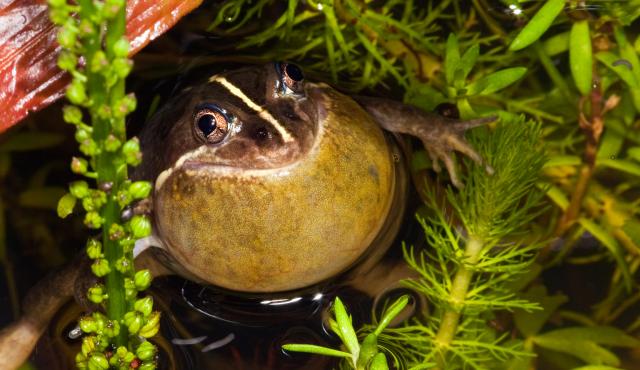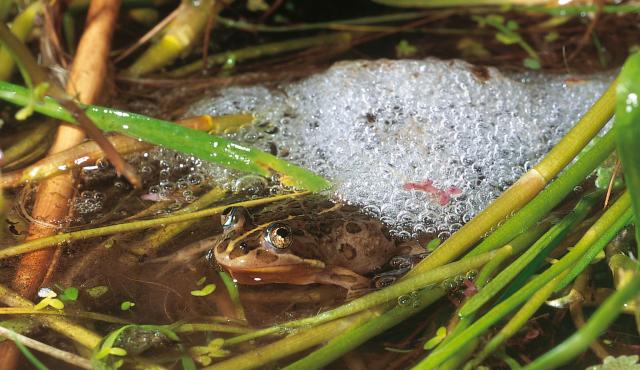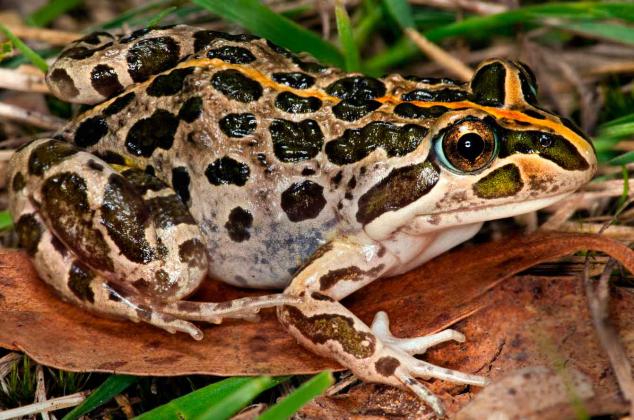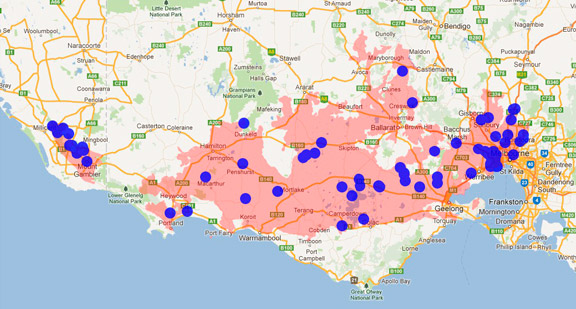A range of teacher professional learning programs will be developed to accompany the Biodiversity of the Western Volcanic Plains online outreach...




Spotted Marsh Frog
Limnodynastes tasmaniensis (southern call race)
Breeding season: autumn, spring-summer. Females lay 80-1500 pigmented eggs within a floating foam mass.
| Details | Description |
| Type | Amphibian |
| Group | Frog - Southern Frog |
| Other Common Names | Spotted Grass Frog |
| Identifying Characteristics | |
| Distinctive Markings | Adults generally have a smooth pale grey-brown dorsal surface with large olive green spots, and a yellow, red or orange mid-dorsal stripe. Moderately pointed snout and indistinct tympanum. |
| Diet | Carnivore. Insects including beetles, moths, cicadas and caterpillars, also spiders and other invertebrates. |
| Habitat | Wet areas, flood plains and semi-permanent water in open forests, woodlands, shrublands and grasslands. Common in farm dams. In dry periods finds shelter in cracks in the ground or under large rocks. |
| Native Status | Native to Australia |
| Sounds | The identifying call is a short, sharp 'click' or 'plock' regularly repeated, resembling the sound made when two stones are struck together. |
| Taxonomy | |
| Phylum | Chordata |
| Class | Amphibia |
| Order | Anura |
| Family | Limnodynastidae |
| Genus | Limnodynastes |
| Species | tasmaniensis |

Distribution maps indicate current and historic locations where species have been sighted.
Source: Atlas of Living Australia
| Conservation Status | |
| DEPI Advisory List | Not listed |
| FFG Act | Not listed |
| EPBC Act | Not listed |
The conservation status of species is listed within Victoria and Australia.
The Department of Environment and Primary Industry (DEPI) Advisory List consists of non-statutory advisory lists of rare or threatened flora and fauna within Victoria.
The Flora and Fauna Guarantee Act 1988 (FFG Act) lists threatened species in Victoria. Under the Act, an Action Statement is produced for each listed species.
The Environment Protection and Biodiversity Conservation Act 1999 (EPBC Act) is the Australian Government’s key piece of environmental legislation, listing nationally threatened native species and ecological communities.



